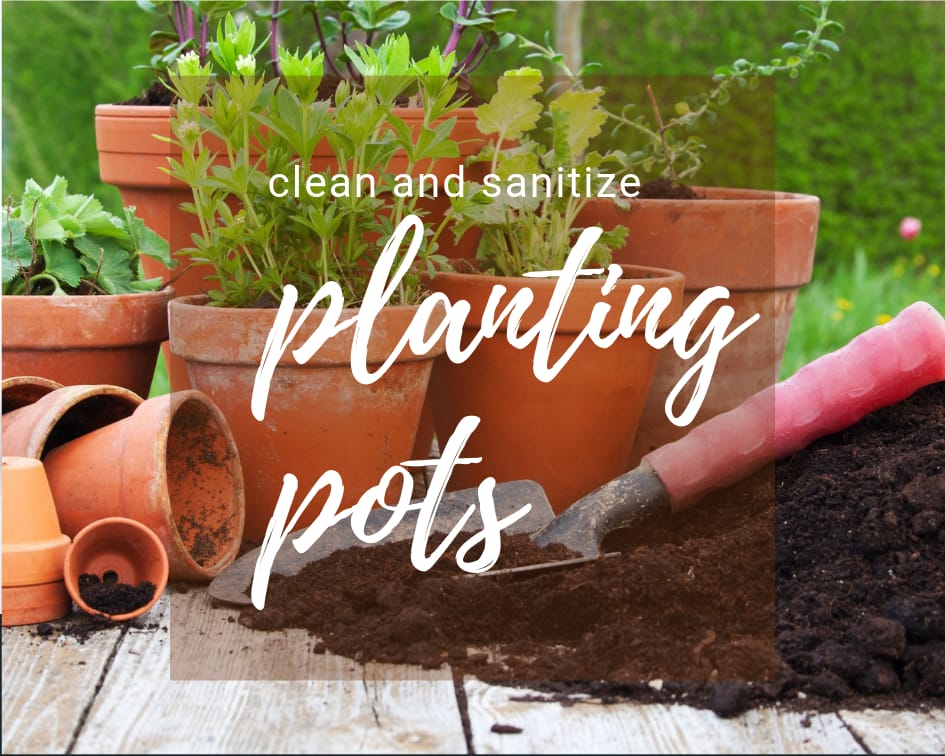This post may contain affiliate links. As an Amazon Associate we earn from qualifying purchases.
If you aren’t in love with gardening at this point, do us a favor: grow sweet potatoes in containers. It’s a surefire way to get anyone to fall in love with the joys of gardening.
It’s easy, it’s practically fuss-free and you’ll end up with a bountiful harvest at the end of the season.
The sweet potato (Ipomoea batatas), a Peruvian native, is a warm-season crop. It grows well in containers and, in fact, containers offer benefits that a garden spot does not.
Containers (especially the ones we use, see below) drain better than most garden soils and the soil remains warmer.
The only pests that generally bother sweet potatoes are slugs and you eliminate that danger when growing the plant in containers.
Choose a compact variety for container-growing, such as Bush Puerto Rico or Vardaman. Make sure you have a long, hot growing season as most sweet potatoes require 90 to 170 days.
Here’s what you need to grow sweet potatoes in containers:
- Planting container (see Resources section at the end of this post)
- Sphagnum peat moss
- Perlite, coarse
- Vermiculite
- Ground dolomite limestone
- Support structure (optional)
- Measuring spoons
- 15-30-15 fertilizer
- 1-gallon container (we use old milk jugs)
- 10-10-10 fertilizer
Let’s plant sweet potatoes!
Choose a planting container that is at least 12 inches in depth and 15 inches in diameter. If it doesn’t contain holes in the bottom for drainage, create them with a drill. Better yet, grow them how we do, in a fabric pot. We bought ours at Bootstrap Farmer, and they are amazing. By the end of the season, they are FULL of sweet potatoes. They also carry different colored grow bags (10 per package at an amazing price!) if you’re looking to add some pops of color to the garden.
Sweet potatoes require a well-draining soil and the best is a DIY project. Here’s the recipe (see Resources, at the end of this post, for where to buy):
- 4 parts of sphagnum peat moss
- 4 parts pf coarse perlite
- 1 part of vermiculite.
- 1 tbsp. of ground dolomite limestone
Mix the ingredients well, and pour into the planting container.
While you can allow the vine to do it’s own thing, some prefer to stake it. If you’re in the latter group, install the support structure now. Use a cage, a teepee or whatever you’re accustomed to. We let ours do their own thing.
Remove the slip from its pot and bury it to within 1 inch of the bottom set of leaves. Press the soil around the base.
Wait, we aren’t finished planting sweet potatoes yet
You may see advice online that claims the sweet potato doesn’t need fertilizer at planting. Disregard the advice. Since you are planting it in a somewhat sterile medium, fertilize it right after planting.
Use a solution of 1 tbsp. 15-30-15 fertilizer in 1 gallon of water. Pour it over the sweet potato plant immediately after planting.
Water the sweet potato until the soil is completely soaked and excess water runs from the bottom of the pot.
If there is no rain, water every day for the first week after planting. Water every other day during the second week and in the third week decrease the frequency to every three days.
Keep decreasing the frequency of watering over subsequent weeks until you are watering once a week. Stop watering the sweet potato three weeks before harvest.
Fertilize the sweet potato again with a 10-10-10 or 20-20-20 fertilizer (water soluble) when the plant produces vines. Use ½ tablespoon of fertilizer per gallon of soil. Always water after fertilizing.
Problems you may encounter growing sweet potatoes
Soilborne diseases
Streptomyces soil rot is a disease of the sweet potatoes’ feeder roots. It occurs most frequently in dry soils with a pH of more than 5.2.
Look for yellow leaves and a lack of production. The Jewel variety is notorious for being susceptible to soil rot while our recommended Beauregard and others are resistant.
Heavier soils and increased irrigation early in the season will help prevent the disease.
Blight
Stem rot is caused by a fungus. You’ll be able to diagnose it if you see wilting and discolored foliage. If humidity levels are high you may notice a white substance (fungus) around the base of the plant on the soil.
There is no treatment for stem rot but you may be able to prevent it by treating the plant with Monterey Liquid Copper Fungicide RTU (OMRI listed for organic gardening).
Learn more by reading about 3 Common Sweet Potato Diseases.

Then, there are the creepy crawlies
Sweet potato plants are attractive to a number of soilborne pests, including
- Sweet potato weevil
- Flea beetles
- Wireworms
- Grubs
- Rootworms
- White-fringed beetles
All but one of these “… feed on the surface of the root,” according to Mollie A. Johnston with Louisiana State University’s College of Agriculture. The adult sweet potato weevil (Cylas formicarius Fabr.), on the other hand, reproduces in the roots and stems of the plant. The female actually chews into these plant parts, lays her eggs and then covers the damage and the eggs with a mass of her poo, or “… a protective, grey fecal plug,” to put it more delicately ( lucidcentral.org).
The next generation, the larvae, eat their way through those roots. This is why this stinker is known as the most destructive pest on sweet potato plants.
Since you’ll be wanting to try some of the yummy sweet potato recipes at the end of this post, you’ll most likely look for a safe, organic way to rid yourself of these weevils. Steinernema carpocapsae, beneficial nematodes, offer a measure of control of the weevil’s larvae.
A pre-plant dip of the sweet potato seeds in a solution of Beauveria bassiana, a fungus, will act as a preventive measure. Follow the instructions on the label.
When to harvest your sweet potatoes
Wait until after your first hard frost to dig up your sweet potatoes. Be careful when digging (we use our hands) so that you don’t skin them. If the pot or grow bag isn’t too large and heavy, feel free to dump them out (gently) onto an old blanket or something equally soft to cushion the impact with the ground.
Cure the sweet potatoes by placing them in an area that remains at 80 to 85 degrees F for about 10 days. The pros at Iowa State University suggest placing the sweet potatoes in “storage crates or boxes and covering them with paper or heavy cloth,” to keep humidity levels high.
Once they’re cured, wrap the potatoes in newspaper and place them in a closet, the garage or other area that remains between 55 to 60 degrees F.
How to cook with your sweet potatoes (sweet potato recipes!)
Spicy-Sweet Roasted Sweet Potatoes
Maple Oven-Roasted Sweet Potatoes
Mashed Sweet Potatoes with Brown Sugar and Pecans
Resources
Sphagnum peat moss
Perlite, coarse
Vermiculite
Ground dolomitic limestone
15-30-15 fertilizer
20-20-20 fertilizer












